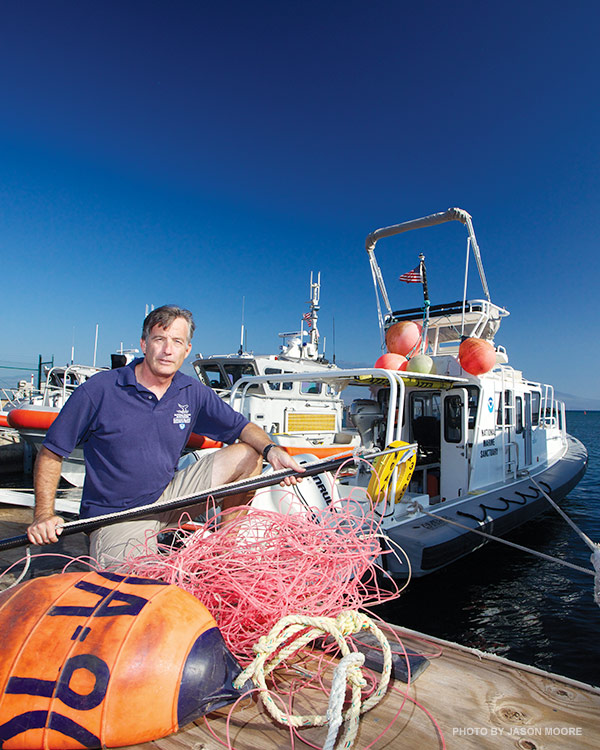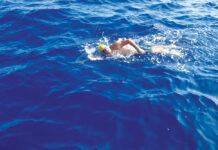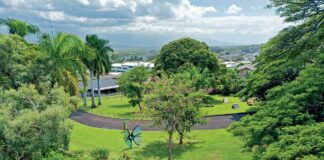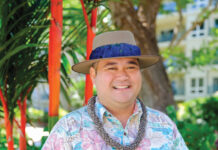Story by Lehia Apana | Photo by Jason Moore
VIDEO CAPTIONS: 1) Rescuers asses the whale’s condition using underwater camera footage of the entangled animal. 2) The rescue team is towed by the entangled whale, a technique known as the “Nantucket Sleigh Ride.” 3) Get a rescuer’s-eye-view via this helmet camera footage showing the response team making the final cut to free the whale.
 Ed Lyman
Ed Lyman
TITLE: Large Whale Entanglement Response Coordinator
NO FLUKE: From his office at the Hawaiian Islands Humpback Whale National Marine Sanctuary in Kihei, Ed offers an analogy to explain his work: It’s like triage, and we’re like whale doctors.”
A typical rescue reverses the old whaling practice called “kegging,” which involved harpooning the animal and using lines to attach barrels or kegs to it, slowing the whale and keeping it on the surface for capture.
“The difference is that we’re trying to save it,” says Ed, acknowledging the irony. “Instead of harpooning the animal, we grapple the gear entangling it; and instead of the lance used to kill the whales, we have long poles with knives to free the whales.”
LIQUID COURAGE: Getting within a boat length of a panicked forty-ton animal is no small feat. Add in the challenge of wielding a twenty-foot pole capped with a sharp blade, and you’ve got a rough day at the office.
“They don’t always know you’re there to help them, and after a while they can get tired of you being around,” says Ed. “One of the biggest risks is that it takes a swing at you.”
WHALE WATCHERS: Ed and his team respond to humpback whale entanglements throughout Hawaiian waters, although he notes that, because of its shallow and calm seas, Maui’s shores are “whale central.”
In 2014, there were thirteen confirmed cases of entangled whales; three were cut free. Those numbers explain why Ed considers the “foundation of the effort” to be the oceangoing community, who will report a distressed whale, then stay with it until help arrives.
“The whale is this huge needle in that very big haystack called the Pacific Ocean. If those boats don’t stand by, we’ll spend the rest of the day looking for the whale and come out empty-handed.”
While every rescue is reason to celebrate, Ed explains that this work is just part of the goal.
“We’re not going to save every whale — we’re just scratching the surface. The key point to this is gaining information for prevention.”




















